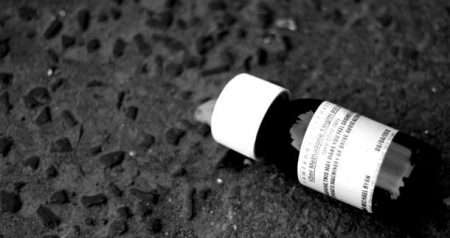A new BBC report exposes the lack of data to measure the methadone programme’s impact in Scotland.
“It is literally a black hole into which people are disappearing”, says Prof Neil McKeganey, from the Centre for Drug Misuse Research. “We still don’t know how many addicts are on the methadone programme, what progress they’re making, and with what frequency they are managing to come off methadone.”
“Successive inquiries have shown that the programme is in a sense out of control; it just sits there, delivering more methadone to more addicts, year in year out, with very little sense of the progress those individuals are making towards their recovery.”
David Liddell, director of the Scottish Drug Forum, disputed claims that addicts were “parked on” the methadone programme.
However Mr Liddell admitted that, unlike England, there is currently no data in Scotland on whether users are relying on the programme indefinitely.
Edinburgh sees largest increase
In 2013, pharmacies claimed back more than £17.9m from the Scottish government for dispensing 470,256 doses of methadone – 22,980 doses more than in 2014.
But despite this overall decrease, new data revealed the amount of methadone dispensed has increased in a third of Scottish local authorities over the last two years. The Edinburgh area saw the largest increase in doses (2,949), followed by Falkirk (421) and Argyll and Bute (405).
Prof McKeganey said: “The aspiration contained within the government’s ‘Road to Recovery’ drug strategy explicitly said that the goal of treatment must be to enable people to become drug-free rather than remain on long-term methadone.”
“These figures show you that we are not achieving that goal – we are not witnessing large numbers of people coming off the methadone programme.”
There are alternatives, including prescribing medical heroin, but many in the drugs field say the debate should move away from these to an examination of how the wider needs of drug users can be met.
Prof McKeganey would like to see a two-year reassessment implemented so that if the “highly addictive” methadone does not seem to be working for an individual, they can then either try the more expensive suboxone or enter a drug-free residential home.
“That seemed preferable to me than leaving people on a methadone prescription for years – and then the worry is that you’ve turned your heroin addicts into methadone addicts.”
Figures released by the NHS in 2012 revealed that methadone-implicated deaths increased dramatically in cases where the individual had been prescribed the drug for more than a year.
Recent figures from the National Records of Scotland also reveal methadone was implicated in nearly the same number of deaths as heroin in 2013.
A statement by the Scottish government did not address the lack of data to prove the programme was enabling addicts to become drug-free.
Community Safety Minister Paul Wheelhouse said: “Prescribing opioid replacement therapy is an independent decision for individual clinicians, in line with the current UK guidelines on the Clinical Management of Drug Misuse and Dependence.”
However, with nearly £18 million being spent on methadone, the question must be asked, is this treatment being monitored and evaluated properly? Sadly, the answer seems to be a resounding no.
Use the INTERACTIVE DASHBOARD developed by BBC data journalist Marc Ellison to see how much methadone was dispensed near you in 2014.
See Castle Craigs programme for treating addiction.


